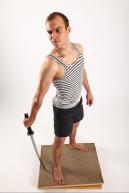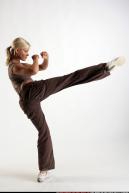About Dynamic Range Cameras
A dynamic range camera is used to create a preview of the scene the camera will cover when the shutter is pressed and images are recorded when the shutter is released. This allows the photographer to take a series of images without needing to worry about saving images in a different format. The images are then edited with the appropriate software, typically in the way that the photographer would like them printed. Many people have been happy with the results from using a digital camera to record and edit their own images; this article will explain how a dynamic range camera works and how you can use it to your advantage.
Dynamic Range (DR) cameras are used in a variety of different industries to ensure correct, accurate tracking of individuals, animals and other face recognition. Digital Wide Dynamic Range (DRW) imaging is often used in conjunction with video surveillance to capture images outside or in conditions that would be too difficult to use traditional film cameras in. Wide Dynamic Range (DR) cameras are used in many different industries to ensure accurate tracking of individuals, animals and other face recognition. Digital Wide Dynamic Range (DR) imaging is often used in conjunction with video surveillance to capture images outside or in conditions that would be too difficult to use traditional film cameras in.
There are two major technologies that define digital cameras and the ability to capture a high dynamic range image; digital sensor and digital tone mapping. Digital Sensor captures the image and processes it depending on the lighting environment, the subject of the shot and the amount of light available. Digital Tone Mapping digitally adjusts the white balance of the captured image to compensate for any possible color rendering problems such as under or over exposed tones. By adjusting the white balance, digital tone mapping ensures that the color rendition of the captured image will be consistent regardless of lighting conditions.
A common question in the photographic world is, "How long does it take for a camera to focus on a subject". The answer to this question is determined by the shutter speed and the ambient light available to the camera. The longer the shutter speed, the lower the image quality and the shorter the subject's gaze will be when the shot is taken. Also, a camera that has a high number of fast focus-aways and a high number of stationary center focal points will cause the camera to focus more quickly resulting in shots that are more blurry.
Shutter speed is determined by a highly sensitive microchip on the camera board called a zone filter. The zone filter controls the amount of blurred images that the camera captures during playback. Another important consideration is whether or not to use a manual or automated Servo function. Servo allows the camera to focus even when there is no light present on the subject. The main advantage of using Servo is that you can determine when to use flash.
The combination of these two technologies results in extremely accurate and vivid shots that capture the true image as captured by the camera. A low contrast high dynamic range camera will capture a bright image with very little background shadow. The Servo system allows the camera to focus even when there is little or no light present which will eliminate the need for the camera to ever stop to take a snapshot. The result of using one of these cameras is that you get an extremely quick camera that has high contrast and high ISO speeds. This combination allows for great image quality and the ability to use automatic exposure control and a fast shutter speed resulting in shots that are highly detailed and with very little background shadow.







